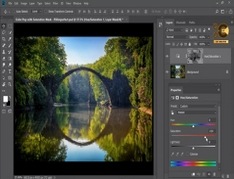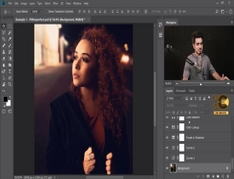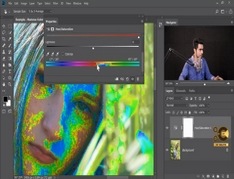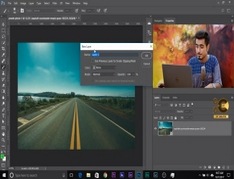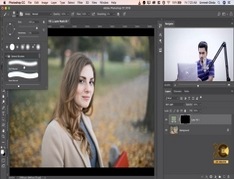You must need to login..!
توضیح
قوانین تنظیم و ترکیب بندی
برای دانلود قوانین تنظیم و ترکیب بندی با کیفیت full hd 1080p از پلیر سایت یا لینک زیر استفاده کنین
لینک دانلود Link download
زاویه ها و دیدگاه ها
به یاد داشته باشید ، ما در یک دنیای سه بعدی زندگی می کنیم. بنابراین ، فیلم باید از فضای سه بعدی نیز استفاده کند (با این حال من طرفدار فیلم های سه بعدی نیستم). فاصله بین دو شخصیت در یک شات بدون شانه ، یا نگاه کردن به سمت افق یا نور در انتهای یک تونل ، چشم انداز ایجاد می کند. با چشم انداز ، ما زاویه هایی ایجاد می کنیم. زاویه ها و خطوط همگرا در یک تصویر به طور طبیعی چشم ما را به یک نقطه هدایت می کنند.
خلاقانه می توانیم از این ایده برای انتقال احساسات یا مضامین مختلف استفاده کنیم. فاصله بین دو نفر می تواند هم تحت اللفظی و هم استعاری باشد. یک هدف یا هدف می تواند برای همیشه دور از دسترس به نظر برسد. ما می توانیم یک شخصیت را در مرکز قاب ، بین دو شخصیت مخالف دیگر ، جدا کنیم و نشان دهیم که همه چشمان به اوست و فشار در حال افزایش است.
ما همچنین می توانیم از فاصله یک جسم یا شخص از لنز استفاده کنیم تا قدرت و اهمیت آن مشخص شود. همانطور که آلفرد هیچکاک اظهار داشت ، “اندازه یک شیء در قاب باید با اهمیت آن در داستان برابر باشد.”
اما ، فقط لازم نیست دوربین را به جلو و عقب حرکت دهیم. برای ایجاد انواع مختلفی از زوایا می توانیم آن را بالا یا پایین آوریم تا یک شخصیت بزرگتر یا کوچکتر به نظر برسد. شخصیتی که به ظاهر در حال رشد یا کوچک شدن است ، احتمالاً یکی از مهمترین شاخص های قدرت است. به روشی فکر کنید که یک کبرا خودش بلند باشد و هود خود را باز کند ، یا اینکه چگونه یک سگ دم خود را بین پاهای خود پنهان کرده و خودش را به زمین می کشد.
Angles and Perspective
Remember, we live in a three dimensional world. So, film should utilize three dimensional space as well (I’m not advocating for 3D movies, however). The distance between two characters in an over-the-shoulder shot, or looking out towards the horizon or to the light at the end of a tunnel, creates perspective. With perspective, we create angles. Angles and converging lines in an image naturally guide our eyes to a single point.
Creatively we can use this idea to convey several emotions or themes. The distance between two people can be both literal and metaphorical. An object or goal can seem perpetually out of reach. We can isolate a character in the center of the frame, between two other opposing characters, showing that all eyes are on him and the pressure is mounting.
We can also use the distance of an object or person from the lens to denote power and importance. As Alfred Hitchcock stated, “the size of an object in the frame should equal its importance in the story.”
But, we don’t just need to move the camera forwards and backwards. We can raise or lower it to create different types of angles to make a character look bigger or smaller. A character seemingly growing or shrinking in size is quite possibly one of the most primal indicators of power. Think of the way that a cobra stands herself tall and opens up her hood, or how a dog hides his tail between his legs and lowers himself to the ground.



